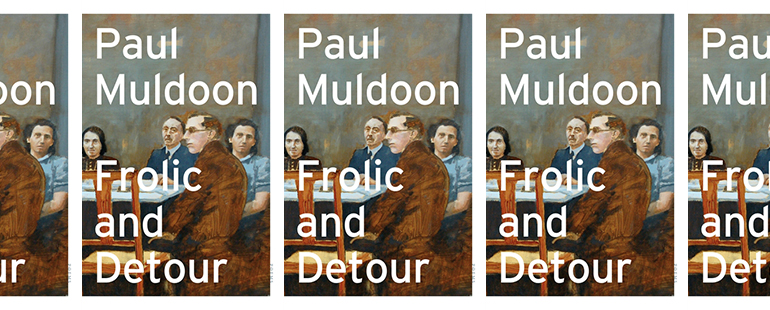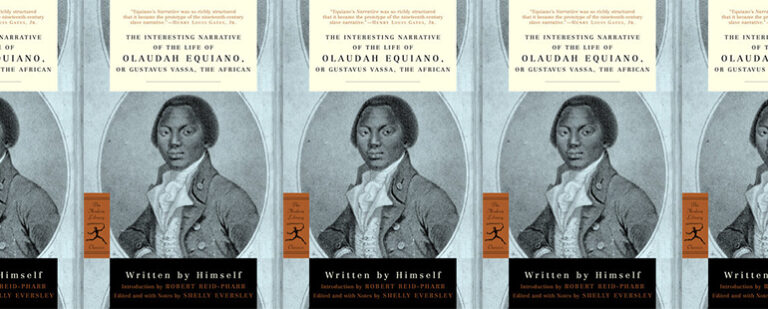Long Poems, Long Sentences

Paul Muldoon’s characteristic zigzagging, the sense of controlled meandering through a lineated sentence flagged by a pattern of end-rhymes, has never been aimless. As made clear with the publication of his rightfully celebrated “Incantata” in his 1994 collection, The Annals of Chile, Muldoon’s minute-hand, which already works double-time, is capable of amassing his particularly wide-ranging tastes into a long sentence. “Incantata” is made of forty-five nine-line stanzas, each stanza a single sentence. One pleasure of these long sentences is the opportunity to look out the window at whatever signposts we pass while traveling toward the final clause—and, along the way, to think about what these objects signify, until something else appears. With a syntactical urgency tamped by Muldoon’s patently clever tone and rock-star attitude, these long sentences do not clamber for something rhetorically charged, a conclusion, or a single point. They command from us an attentive listening to what we hear as we charge towards the last punctuation—and once we begin to hear those sounds, the place we’ll arrive becomes clear, or clearer.
What qualifies as a longer sentence in a poem? It’s unlikely this question can be answered in a way that applies to more than a single example, and certainly we cannot define it by word count or number of clauses. Muldoon’s longer sentences are those that test the elasticity of his own metaphors—how taut can they stretch before the poem’s figurative thinking seems ornamental to (rather than generated through) the poem’s structure. The title poem of Frolic and Detour (2019), his thirteenth and most recent collection, is telling: to avoid this sort of unwarranted frenetic movement, readers will look around for a familiar stop while we travel. When I frolic around my neighborhood, I wander around playfully; on a detour, I’m hoping to arrive somewhere while intentionally avoiding obstructions on my usual path.
Yet a detour isn’t necessarily a digression once one looks back from the place they’ve arrived; instead, it becomes an entirely new path. For Muldoon, these digressions are almost always marked by his rhymes, his checkpoints. Here are the first two quatrains of the poem, which are also the first two sentences of the poem, the second spilling into the third four-line stanza:
The house wren, like the house sparrow
and the common spink,
is known to punch above his weight. Troglodyte, tinsmith in his burrow,
his tink tink, tink tinkbespeaking a familiarity with the science of iron-carbon alloys
the Chinese developed alongside the Dao,
he’s believed to anticipate the lice
that will infest his nest by stitching into
its brush-pile the egg sacs of lice-eating spiders.
The poem wastes no time in introducing the subject of the first sentence, “the house wren,” which is then taxonomically grouped with other tiny, clever birds. The second sentence also refers to the house wren, clear immediately from the noun-sous-metaphorical “troglodyte”—and in delaying the pronoun-referent “he,” the poem also delays the answer to how the bird “punches above his weight.” Think about how the metaphorical body of the bird is modified after the subject is first introduced, before we’re given an example of the house wren’s strength: it’s compared to other birds, it’s a troglodyte, a tinsmith with some knowledge of metal. Each comparison is a metaphor, a detour into language: a house-wren is a troglodyte, but a troglodyte is also literally a caveman. With the sounds of nest-construction, with “tink” semantically connecting itself to “spink,” the house-wren is also a musician, and these junctures of familiar and straightforward sounds mark a rest-stop for us as we move through the variations of a wren, then through the poem’s three sections.
Another familiarity: Muldoon borrows the phrase “frolic and detour” from the lexicon of legal terminology. To determine liability and workers’ compensation, these words describe situations in which an employee deviates from the expectations of their employment, upon which employers will not be liable for any personal damages. A frolic and a detour both depend on a contract between the employee and their employer, a mutual understanding of how one should behave on the job. Regardless of whether they’re ultimately broken, contracts between a reader and a poem inhere in form—or, most generally, the way the poem articulates itself through syntax, lineation, rhythm; poets might write about what they don’t know with freakishly opposite metaphorical effects, and this is what gives Muldoon the flexibility to stockpile these disparate cultural and historical icons. Through its system of purposeful digression, “Frolic and Detour” illustrates how transgressive injury can be displaced into another time, another moment, with a seemingly different focus of culpability. Here are the first two sentences of the second section:
Siding as I must with the Iroquois in their struggle against the Huron
I’ve enlisted the spirit of Tamanend
to track down the identity of an actress, ‘Jenny Wren,’
who’s credited with playing Tinker Bell in the first West Endproduction of Peter Pan. Homo troglodytes was a term devised by Linnaeus
for a division of apedom with which he saw us being in dialogue,
something along the lines
of the cave dwellers who first distinguished the metallictaste of chalybeate from sulfur and magnesium.
As it regards a seventeenth-century English-inspired proxy war fought through Indigenous American tribes and French fur-traders, the foregrounding phrase “Siding as I must” collapses our sense of historical distance from that war. But readers cannot think about the past for too long, at least not long enough to figure out why it’s so important for the poem to choose a side here—because the modal verb suggests that answering this why, in part, characterizes what’s important for the poem, important for what we’re giving our attention. The figurative thinking, from the Beaver War to Tamamend to Peter Pan, seems arbitrary to us, born only from a mood, from whatever the poet’s staring at. That is until, stanzas later, these characters reappear and converse and Muldoon’s oddball thinking points to an ostensible career retrospective: “The fact that I’ve always run two tape reels slightly out of phase / will only partly explain my engagement with the non sequitur / and the leap of the imagination.” Muldoon, scribbling his name on the contract between reader and poet, confesses there’s something that might need explaining.
Reading Muldoon’s poems, especially “Frolic and Detour,” one remembers that while these digressions might need explaining in moments when we travel at hyperspeed, they are not directionless. What’s notable is that we don’t feel as if we’ve been fooled into looking somewhere we shouldn’t be looking along the way, that the distinct figures and objects we encounter accumulate into their own reasonable corner of the poem. Here is the first quatrain of the third and final section: “Then as now, the trick was to accept that a mindful rallying of the unruly / on an eternally nameless ‘path’ / is no less a hen’s errand than proving a house wren avails of time-release / nit-eating spiders.” This sentence enacts an exaggerated version of traditional forms with alternating measures—often associated with musical performance, often ballads. Muldoon’s most important verbs, which might seem thankless throughout the swarm of idea and object and animal, guide us through that path: the entire stanza shifts and hinges on the predicate, which configures “the unruly on an eternally nameless ‘path’” to the hens and wrens and spiders. Yet we know, for Muldoon’s poems and specifically for “Frolic and Detour,” that this path is neither eternal nor nameless. We know what to call it and we know when it will end—and this is what gives us permission to embrace “a mindful rallying of the unruly.” The poem must end, as will the sentence—and knowing this, Muldoon fills his time: “All I can do is sound the lyre, / however feebly, against the drone.”
When Muldoon sounds the lyre against the drone, he also asks us to listen to his lyre instead of the drone; a poem demands the attention of a reader. After almost fifty years of his poetry, Muldoon has prepared his readers for a journey not through our own predictable circles—these syntactical maps rule out one’s own choice between right or left—but to arrive somewhere comfortably unexpected. Poetry shepherds one through sentences, language that thinks beyond semantic configurations of the world and that embraces what seems terribly unreal and absent from our lives. Imagine that phrase, “what seems terribly unreal,” modified by a conditional, because mandates about poetry historically resist themselves, rules that have been broken several times and in several different ways. It may not demystify or mystify an experience, clarify or make the world imperceptibly difficult, but, through the way it’s made, a great poem can often formulate metaphor as matter of fact, unembellished, as if one needs to turn their heads slightly to the left. Muldoon shows us how far a sentence can stretch to include eclectic taste, and what expectations pervade the language that we hear and read every day—then he guides us to our destination with something experienced.


